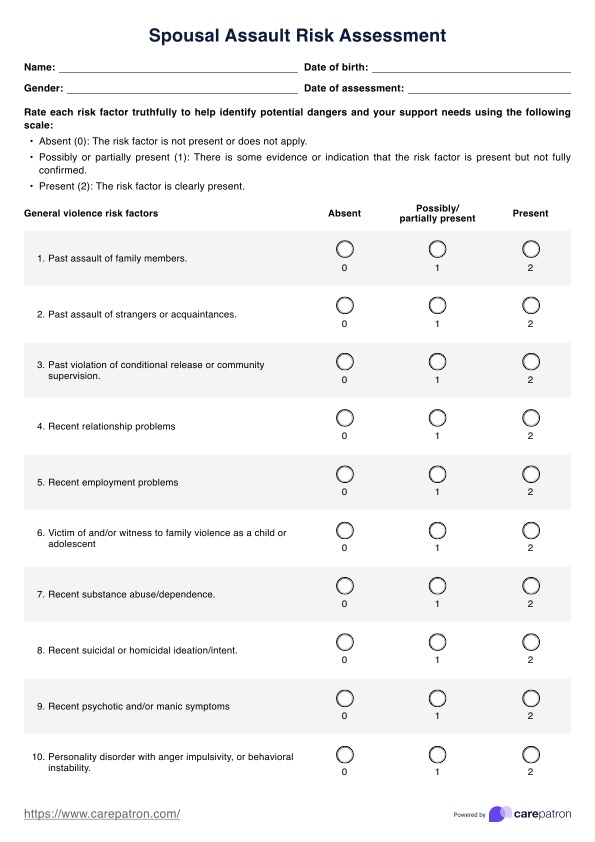The Spousal Assault Risk Assessment (SARA) is a tool used to evaluate the risk of future violence or spousal assault in individuals based on past behaviors and different types of risk factors.

Spousal Assault Risk Assessment
Quickly assess spousal assault risk with our Spousal Assault Risk Assessment Template to guide safety planning and interventions effectively.
Use Template
Spousal Assault Risk Assessment Template
Commonly asked questions
Risk assessment for violence involves evaluating an individual’s likelihood of committing violent acts by analyzing factors such as past behavior, mental state, and external stressors.
To assess the extent of risk in domestic violence cases, professionals typically evaluate risk factors such as prior abuse, threats, access to weapons, and the history of violence to determine the severity and likelihood of future harm.
EHR and practice management software
Get started for free
*No credit card required
Free
$0/usd
Unlimited clients
Telehealth
1GB of storage
Client portal text
Automated billing and online payments











